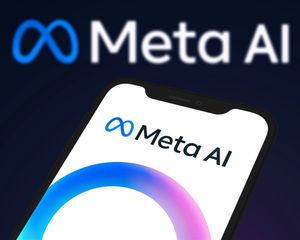SHENZHEN, China, March 17, 2025 (GLOBE NEWSWIRE) -- MicroCloud Hologram Inc. (NASDAQ: HOLO), (“HOLO” or the "Company"), a technology service provider, they are researching CV-QNN (Continuous Variable Quantum Neural Networks) technology, with the aim of building Variational Quantum Circuits embedded in CV architecture. In this way, it is possible not only to quantumize classical neural networks, but also to design various specialized quantum models, such as convolutional quantum networks, recursive quantum networks, and residual quantum networks, providing new tools for quantum artificial intelligence technology.
The core of HOLO CV-QNN lies in achieving affine transformations and nonlinear mappings in neural networks through layered continuously parameterized quantum gates and nonlinear activation functions. The CV architecture is a form of quantum computing where information is encoded using continuous degrees of freedom, such as the amplitude and phase of electromagnetic fields. This contrasts with the DV architecture, which uses discrete quantum bits. The CV architecture is more closely aligned with classical information processing methods, thus offering inherent advantages when implementing neural networks. The basic operational units in CV architecture are Gaussian and non-Gaussian transformations of quantum states.
Affine transformations are fundamental operations in neural networks, typically composed of linear transformations (matrix multiplication) and bias terms (vector addition). In CV-QNN, affine transformations are realized through Gaussian gates. Gaussian gates are operations that preserve the Gaussian distribution of quantum states, including squeezing, displacement, and rotation gates. These gates can precisely control the amplitude and phase of quantum states, thereby simulating the linear operations in classical neural networks.
Nonlinear activation functions are key to enabling neural networks to represent complex features. In classical neural networks, common activation functions include ReLU, Sigmoid, and Tanh, among others. In the CV architecture, nonlinearity is achieved through non-Gaussian gates, such as polarized optical nonlinear operations or non-Gaussian optical crystals. The nonlinearity introduced by these non-Gaussian gates enables CV-QNN to represent more complex functions, enhancing the model’s expressiveness.
HOLOCV-QNN adopts a layered structure, with each layer composed of several continuously parameterized quantum gates. This layered design is similar to the multilayer perceptron structure in classical neural networks, allowing CV-QNN to perform complex nonlinear transformations while preserving quantum coherence. Additionally, this layered structure is theoretically universal, meaning that through appropriate combinations of gate operations, it can approximate any continuous function.
HOLO CV-QNN leverages quantum superposition and entanglement properties, offering the potential for exponential speedup when processing large-scale data. Additionally, because the information encoding in the CV architecture is closer to classical computing methods, CV-QNN boasts strong scalability and can seamlessly interface with existing classical computing systems. Moreover, the design of CV-QNN fully exploits the energy efficiency advantages of continuous-variable quantum computing. By using Gaussian and non-Gaussian gates, complex quantum operations can be achieved at a lower resource cost, providing a practical and feasible solution during the stage when quantum computer hardware is not yet fully developed.
The potential applications of CV-QNN are vast. It can achieve more efficient image classification, object detection, and semantic segmentation through quantum convolutional networks; enhance performance in text generation, sentiment analysis, and machine translation using quantum recursive networks; offer faster solutions in quantum chemistry, materials science, and complex system simulations; and enable more accurate market forecasting and risk assessment through quantum neural networks.
The emergence of HOLO Continuous Variable Quantum Neural Networks (CV-QNN) offers a fresh perspective on the integration of quantum computing and artificial intelligence. By embedding the structure and functions of classical neural networks within the framework of quantum computing, this technology not only significantly enhances the computational efficiency of models but also expands their application boundaries across different fields. From quantum convolutional networks to recursive quantum networks and residual quantum networks, CV-QNN technology demonstrates its potential in multiple scenarios, including image processing, natural language processing, and scientific computing. These advances signify that we are gradually entering an era driven by quantum artificial intelligence.
However, the HOLO CV-QNN technology still faces several challenges. For example, issues such as the stability of quantum hardware and the optimization of computational resources need further attention. Additionally, the potential accumulation of errors during the training process of quantum networks and the need for more efficient designs of quantum optimization algorithms present new challenges for both academia and industry. Nonetheless, these challenges also represent opportunities. As quantum hardware advances and software tools improve, the performance of CV-QNN will continue to enhance, and its future application scenarios will become even more widespread.
Against the backdrop of quantum technology gradually transforming the world, HOLO CV-QNN not only represents a new computational tool but also holds the potential to redefine the boundaries of artificial intelligence capabilities. It is believed that as this technology continues to develop, it will become the core driving force behind the next generation of intelligent systems. Whether it is unveiling the mysteries of nature in scientific research or solving complex practical problems in industry, the potential of CV-QNN technology will be exponentially magnified, bringing unprecedented opportunities.
About MicroCloud Hologram Inc.
MicroCloud is committed to providing leading holographic technology services to its customers worldwide. MicroCloud’s holographic technology services include high-precision holographic light detection and ranging (“LiDAR”) solutions, based on holographic technology, exclusive holographic LiDAR point cloud algorithms architecture design, breakthrough technical holographic imaging solutions, holographic LiDAR sensor chip design and holographic vehicle intelligent vision technology to service customers that provide reliable holographic advanced driver assistance systems (“ADAS”). MicroCloud also provides holographic digital twin technology services for customers and has built a proprietary holographic digital twin technology resource library. MicroCloud’s holographic digital twin technology resource library captures shapes and objects in 3D holographic form by utilizing a combination of MicroCloud’s holographic digital twin software, digital content, spatial data-driven data science, holographic digital cloud algorithm, and holographic 3D capture technology. For more information, please visit http://ir.mcholo.com/
Safe Harbor Statement
This press release contains forward-looking statements as defined by the Private Securities Litigation Reform Act of 1995. Forward-looking statements include statements concerning plans, objectives, goals, strategies, future events or performance, and underlying assumptions and other statements that are other than statements of historical facts. When the Company uses words such as “may,” “will,” “intend,” “should,” “believe,” “expect,” “anticipate,” “project,” “estimate,” or similar expressions that do not relate solely to historical matters, it is making forward-looking statements. Forward-looking statements are not guarantees of future performance and involve risks and uncertainties that may cause the actual results to differ materially from the Company’s expectations discussed in the forward-looking statements. These statements are subject to uncertainties and risks including, but not limited to, the following: the Company’s goals and strategies; the Company’s future business development; product and service demand and acceptance; changes in technology; economic conditions; reputation and brand; the impact of competition and pricing; government regulations; fluctuations in general economic; financial condition and results of operations; the expected growth of the holographic industry and business conditions in China and the international markets the Company plans to serve and assumptions underlying or related to any of the foregoing and other risks contained in reports filed by the Company with the Securities and Exchange Commission (“SEC”), including the Company’s most recently filed Annual Report on Form 10-K and current report on Form 6-K and its subsequent filings. For these reasons, among others, investors are cautioned not to place undue reliance upon any forward-looking statements in this press release. Additional factors are discussed in the Company’s filings with the SEC, which are available for review at www.sec.gov. The Company undertakes no obligation to publicly revise these forward-looking statements to reflect events or circumstances that arise after the date hereof.
Contacts
MicroCloud Hologram Inc.
Email: IR@mcvrar.com






